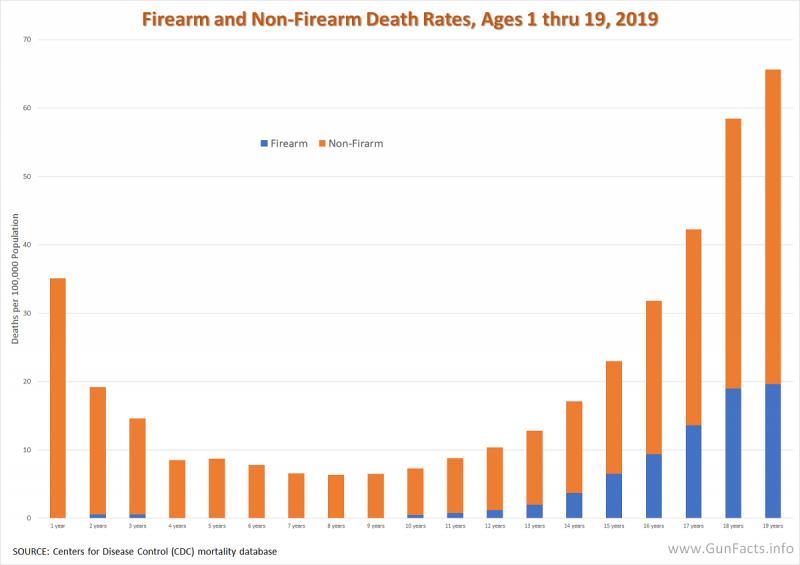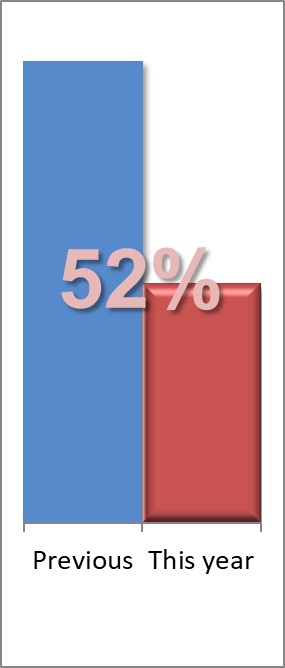Issues under debate and what is known
Below we list some issues within the public debate about guns and violence and some notes about what to watch out for.
Leading cause of death for “children”
Both the criminology and epidemiology fields maintain separate classifications for “children” and “teens” (the former typically divides at 12/13 years of age and the latter at 13/14).
They do so for obvious and not-so-obvious reasons. The main factor on the criminology/sociology side is that the teen years involve increasing degrees of away-from-home independence and associated risk taking.
Because of this (and some complex social aspects to street gang life) firearm death rates among “children” are nearly zero and steadily increase among teens. Thus, any advocacy organization amalgamating the two is making a serious data quality error.
If offered a study or data that amalgamates both children and teens, ask for the data to be segregated so you can understand and explain things well to your audience.
Assault weapon contribution to deaths
Foremost, know that “assault weapon” is a legislative term, not a technical one. Before the year 2000, the Department of Defense did not classify the term at all (they have since, but we don’t know the year that changed). When the 1994 Assault Weapon ban expired, there were eight different legislative definitions, which banned anywhere from 17 to 75 different models of guns.
This has led to great confusion about their degree of use or lack thereof. For example, for all years 1982 through October of 2023, only 21% of guns used in mass public shootings (MPS) matched the 1994 Federal ban definition. The rate is far less for street crimes since concealability is impossible or impractical with assault weapons.


